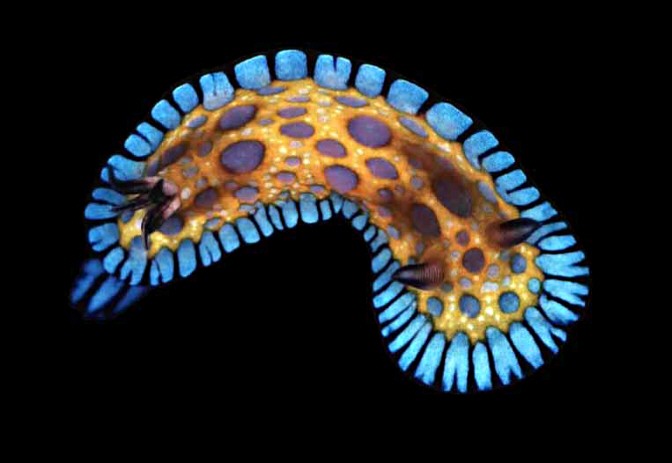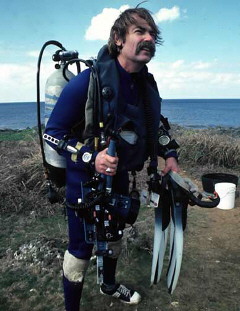
| Chromodoris roboi Courtesy of Dr. Bob Bolland University of Maryland/Asian Division Okinawa |
Chromodoris roboi Gosliner & Behrens, 1998
One of five new species of Indo-Pacific Chromodorids described in a just published paper (February 11, 1998, Proceedings of the California Academy of Sciences, Vol. 50, No. 5, pp. 139-165, 15 figs.) it is named in recognition of Dr. Robert Bolland, webmaster of the The Okinawa Slug Site , Research Associate of the California Academy of Sciences, collector of all the type specimens, opisthobrancher extraordinaire, and good friend. The construction of the name roboi, is two fold, the first two letters of his first and last names, and Bob's personality similarities with Robo Cop, the fictitious personality, both of whom are equally daring and adventurous.
Bob's collections of this species from Okinawan waters dates back to the mid 1980's. Since then, two photographs have been published, one a specimen from Lord Howe Island, New South Wales, Australia (in Coleman, 1989, page 35) and recently, a specimen from Murion Island, Western Australia, shown misidentified as Hypselodoris vibrata (in Debelius, 1996, page 239). The first Chromodoris roboi internet presentation was in October 1996 on The Okinawa Slug Site.
Unquestionably a striking species, the magnificent, deep blue blocks of color along the margin, separated by black areas of pigment, make it easy to distinguish. Most of the notum is yellowish-orange with circles or irregular patches of blue to lavender. These patches are of different sizes and shapes. In some specimens dark brown blotches cover the dorsal surface to varying degrees. The rhinophores and gills are blue-black.
Chromodoris roboi is readily distinguishable from all other species of Chromodoris by its unique pattern of coloration. It is the only species with a yellow-orange body color with blue marginal rectangles separated by black spaces. Chromodoris vibrata (Pease, 1860) is the most similar species in terms of color, and as mentioned above has been confused with C. roboi. It has white pustules on the notum, and a white marginal region with triangular blue interrupting the white. A noteworthy difference is that the gills of C. vibrata, vibrate, hence the name vibrata (see Kay and Young, 1969) while those of C. roboi do not.
This species, which is found relatively deep in Okinawa (about 30-50m),
has been observed to raise and lower the anterior edge of the mantle as
it crawls. This is a common trait of Chromodoris geometrica and one of
the other species newly described in this paper, Chromodoris hintuanensis.
Our special thanks to Robo - Bob Bolland for making his specimens available to us for this description.
Photos courtesy of Dr. Bob Bolland

Send Bob email at bolland@imicom.or.jp |
Taxonomic information courtesy of:

David W. Behrens
Author:
Pacific Coast Nudibranchs
Send Dave mail at seachalleng@earthlink.net
|
